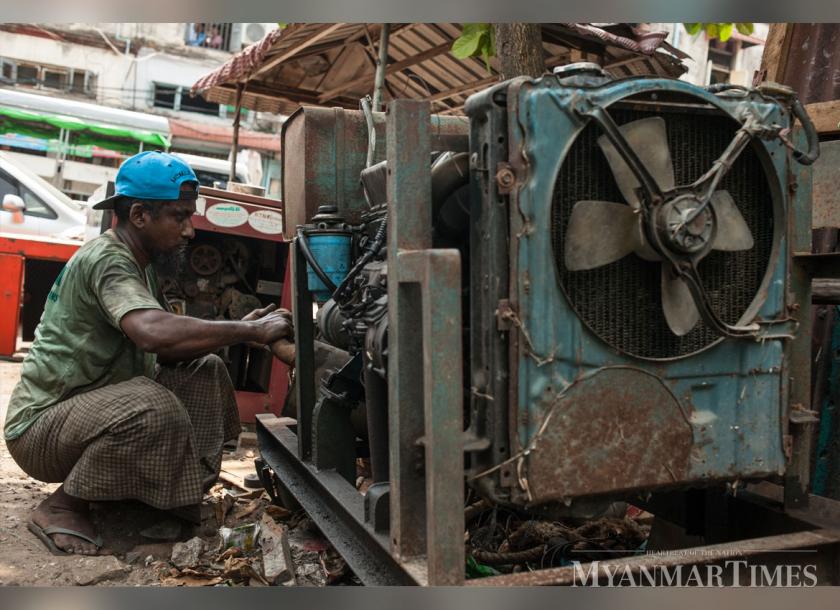The government has announced that electricity rates will increase substantially for both residents and businesses from July, 2019
1 Jul 2019
Electricity rates will increase substantially from July for both residents and businesses in the first changes in tariffs for five years, the government has announced.
Monthly bills for consumers of 100 units will go up by over 70 percent.
Investors in the energy sector and analysts welcomed the increase, however. Myanmar’s present electricity price is financially unsustainable, with rates the lowest in ASEAN and unchanged despite years of discussions. The proposal by the Ministry of Electricity and Energy (MOEE) to raise prices was approved by parliament in April.
At present even the wealthiest residents in Yangon purchase subsidised electricity below cost. These subsidies are incompatible with the ambitious electrification plan the government has set out. The state subsidy for power supply is a key obstacle to attract investors to scale up the country’s much-needed power generation.
The government supplied electricity to the public at a loss of K507 billion in the 2017-18 fiscal year and losses rose to K630 billion in 2018-19, according to data from the Ministry of Planning and Finance. The loss is set to be narrowed under the new tariffs but the exact projection is not yet available.
Meanwhile, blackouts in Yangon have severely affected manufacturers and businesses. Intermittent supply disrupts production, harming productivity and influencing the day-to-day activities of urban centres.
Rate changes
Under the new rates, residential households and religious buildings will continue to pay at the previous rate at K35 per unit, but only for up to 30 units. Consumers will be charged K50 for 31-50 units, K70 for 51-75, K90 for 76-100, K110 for 101-150, K120 for 151-200, and K125 for over 201.
Consumers who used to pay K3500 for 100 units will now pay K6050, excluding the service fee, a 72.9pc increase.
Business consumers, including companies, factories, government buildings, embassies, and international organisations, will pay K125 per unit up to 500 units, increasing by K10 for 50,001-100,000 units. K180 per unit will be charged for over 100,000 units.
The European Chamber of Commerce in Myanmar expects the new tariffs to have a big impact on businesses and industries as they take a bigger share of the power resources but is supportive of the move.
EuroCham deputy director Marc de la Fouchardiere said the increases are necessary to boost government finances for the Myanmar Sustainable Development Plan.
“We believe that increasing energy tariff levels will make local and foreign direct investments into improved energy infrastructure more financially attractive and promote energy-saving behaviour,” said EuroCham deputy director Marc de la Fouchardiere.
Increasing power generation
The private sector and researchers welcomed the move, saying the changes can make investments into improved energy infrastructure more attractive financially.
“This sends a clear signal to investors that more projects will be financially sustainable. It also narrows the gap between rural mini-grid tariff and national grid tariff,” commented U Pyi Wa Tun, owner of Myanmar energy firm Parami Energy.
The price increase will allow businesses developing power projects to be more competitive, according to business information firm Frontier Myanmar Research (FMR), which monitors energy.
“The new rates are a positive step forward in the development of Myanmar. They signal the government's intent to tackle Myanmar's electrification gap and create opportunity for the private sector to better electrify the country,” said FMR managing director Jordan Zele.
The motivations behind tariff reform are not just financial, according to a 2016 report from the International Growth Centre. Prices should embody the social costs of energy consumption such as pollution and emissions from its use. Changing the way energy is priced in Myanmar can help it utilise its renewable energies, notably its wind and solar potential.
Though the electricity price will rise in the short term, Mr Zele said businesses and manufacturers can expect more secure power supply over the long term as additional capacity is added to the grid. Therefore reliance on expensive generators can be reduced and result in a more efficient power supply.
Guaranteeing access to electricity in Myanmar is challenging, partly owing to the varied geography of the country. The IGC study said policies supporting off-grid alternatives are important for remote regions.
The subsidy cuts will stimulate the off-grid power sector which has been hamstrung by the low price of grid electricity, Mr Zele added. Similarly, power projects that work in conjunction with the grid, such as solar rooftops, will become more commercially viable.
Currently, the government incurs costs of K89 per unit to generate and distribute electricity from hydropower, and K178 per unit for electricity from natural gas, according to the MOEE.
(The Myanmar Times: https://www.mmtimes.com/news/myanmar-electricity-rates-soar-next-month.html)











